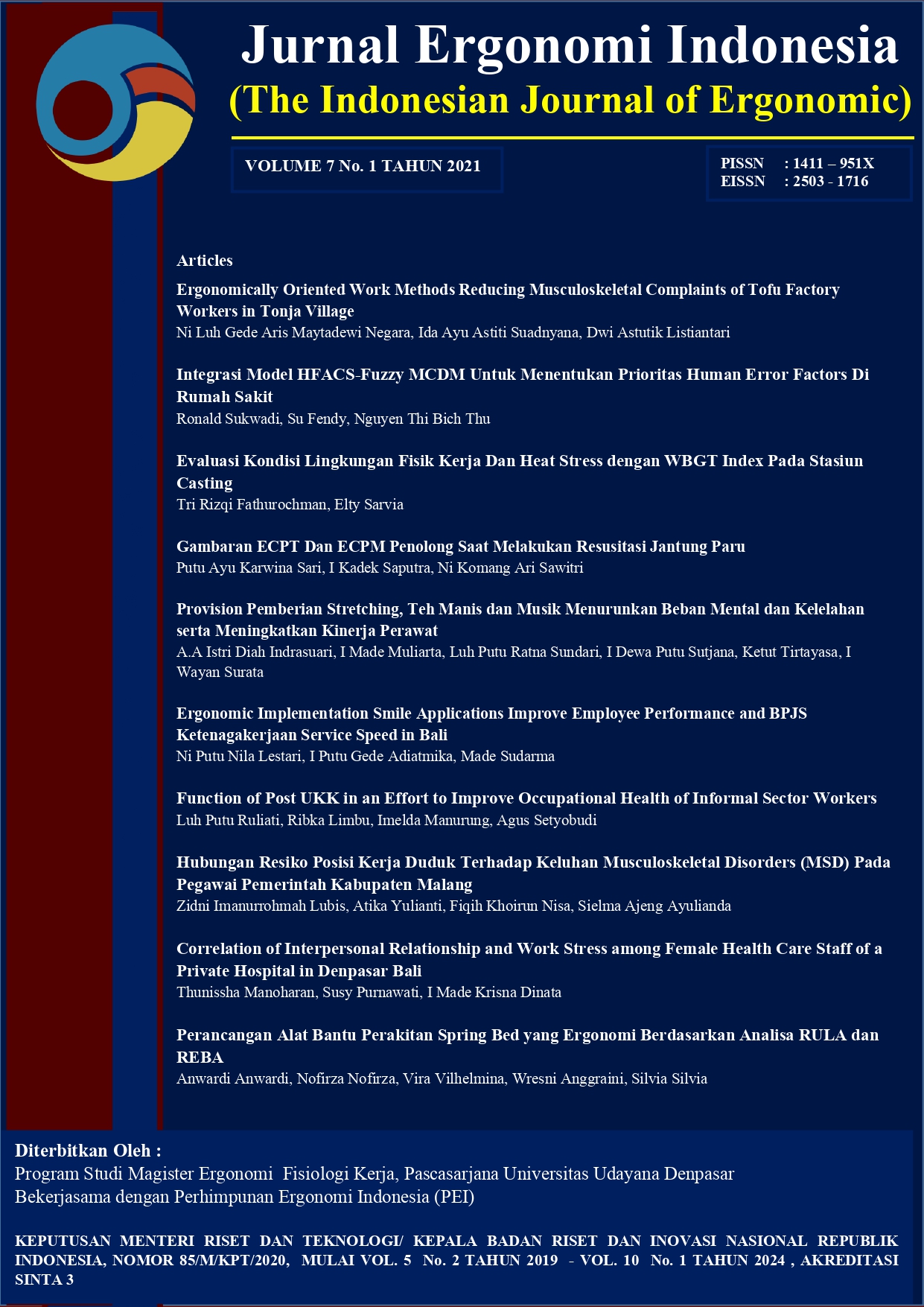Ergonomic Implementation Smile Applications Improve Employee Performance and BPJS Ketenagakerjaan Service Speed in Bali
Abstrak
The type of service that BPJS Ketenagakerjaan participants want when accessing work accident services is that good employee performance was increased the speed of service at work. For this reason, an intervention was implemented in the form of implementing ergonomics in the SMILE application to improve service speed, improve employee performance and reduce eye fatigue rates for Bali BPJS Ketenagakerjaan employees. This research was an experimental research with a treatment by subject design, which involved 16 research samples. There was two periods namely period I work process without intervention and period II work process with interventions in the form of implementing ergonomics in the SMILE application through to IEMAS application. Service speed was measured with a stopwatch, employee performance was measured by a performance questionnaire and eye fatigue data was measured by an eye fatigue questionnaire. Data analysis using T-paired test with a value of ? 0.05 for normally distributed data and Wilcoxon test for data that is not normally distributed. Data obtained from the results of the study showed differences in employee performance with decreased eye fatigue and increased work comfort and service speed (p <0.05). Improved employee performance indicated the results of research in which there was a decrease in eye fatigue in employees by 8.77%, an increase in work comfort by 12.05% and service speed by 89.1%. It can be concluded that the implementation of the implementation of the SMILE application reduces the rate of eye fatigue and increases the comfort of the work of employees, resulting in the speed of employee services to participants BPJS Ketenagakerjaan in Bali
##plugins.generic.usageStats.downloads##
Referensi
Dinata, I.M.K., Adiputra, N., and Adiatmika, I.P.G. 2015. Sit-Standing Work Attitudes Alternately Reduce Fatigue, Musculoskeletal Complaints and Increase the Productivity of Women's Ironing Work in the Household. Indonesian Ergonomics Journal, Vol.1(1):32-37.
Fitria, L. 2016. “Effect of Librarian Work Comfort on Library Service Quality (A Comparison of Librarian Work Comfort UIN ArRaniry and Unsyiah” (thesis). Aceh. Aceh: State Islamic University of Aceh.
Indrawati, E. P., Tirtayasa, I. K., and Adiatmika, I.P.G. 2015. Active Stretching and Rest Training Reduces Musculoskeletal Complaints, Eye Fatigue and Increases the Work Concentration of Employees in the Sanglah Hospital Denpasar Hospital. Indonesian Ergonomics Journal, Vol. 1(1).
Manuaba, A. 2004. Holistic Ergonomics Design as a Strategy for Integrated Ocupational Health-Safety Management Systems into the Execution Management System. Indonesian Ergonomics Journal, Vol. 5(1):1-4.
Regulation of the Minister of Health of the Republic of Indonesia Number 48 of 2016. Concerning Standards and Requirements for Industrial Environmental Health. Jakarta: MENKES.
Setiawan, D. 2010. “Analysis of Worker's Eye Fatigue Before and After Work” (essay). Surakarta: Surakarta University.
Suarjana, G.W.I. 2018. “Redesign of Coconut Shredder Reduces Physiological Loads and Increases Work Productivity in Workers of the Lough Sate Dough Industry in Kediri Tabanan” (thesis). Denpasar: Postgraduate Program at Udayana University.
Suma'mur. 2009. Corporate Hygiene and Occupational Health (HIPERKES). Jakarta: Sagung Seto.








